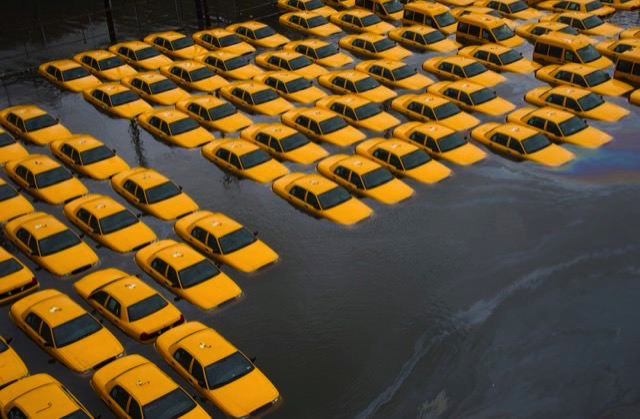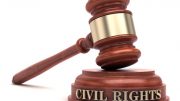In the wake of the historic August flood, there has been a renewed interest locally in the plight of flood victims of Superstorm Sandy, which ravaged the East Coast in 2012.
Some four years later, thousands of homeowners there have yet to complete repairs to their property, and tens of millions of dollars have been spent on litigation that has brought to light evidence not only of mismanagement but of fraud and corruption within the FEMA-administered National Flood Insurance Program.
Unbeknownst to many in these parts, one of the key players in that high stakes drama is a New Orleans-area lawyer named John Houghtaling II. He has represented some 800 plaintiffs in Sandy litigation and has some words of caution for local flood victims: “It is absolutely going to happen again.”
Houghtaling is a colorful character. As you might expect from a wildly successful plaintiff’s attorney, he owns one of St. Charles Avenue’s most iconic mansions and counts racecar driving among his hobbies.
He learned his profession from one of the best, the late Wendell Gauthier, who successfully led the class action lawsuit against Big Tobacco in the 1990s that resulted in a landmark $246 billion settlement, and was one of the original partners in New Orleans’ land-based casino.
Like his mentor, Houghtaling lives large. But he puts in long hours and digs deep. His experience in litigation against FEMA and the NFIP dates back to Hurricane Katrina, when he argued on behalf of property owners that the flooding from Katrina in New Orleans was a manmade disaster—the U.S. Army Corps of Engineers’ levee failures—not a natural one.
He went on to represent more than 1,000 victims after Hurricane Ike in 2008 and took to traveling around the country, giving speeches and CLE seminars on how to fight FEMA and the insurance companies.
In the aftermath of Sandy, he started getting calls from attorneys in the Northeast, whose clients were getting ripped off by the private insurance companies that work in partnership with FEMA to administer the NFIP.
Unlike the recent flood in south Louisiana, in which the vast majority of affected property owners did not have flood insurance, most Sandy victims did. But when they filed claims with the NFIP they weren’t being made whole. Not even close.
Over the next two years, Houghtaling would amass a legal team of more than 40 attorneys and help uncover startling information about how the insurance companies and engineering firms they retained to investigate properties for structural damage intentionally low-balled damage estimates by about 70% on average.
Houghtaling and his team accused certain engineering firms of falsifying reports, going back and changing the findings of initial field inspectors under the guise of “peer review,” to lower the cost of damage estimates. In many instances they classified the structural damage of a flooded property as “pre-existing” and chalked it up to age.
As the story got out, the national media took notice. 60 Minutes did a story in 2015. Frontline aired a documentary in June.
Curiously, Houghtaling wasn’t the only Louisianan wrapped up in the high-profile litigation. One of the engineering firms accused of defrauding Sandy victims was U.S. Forensics of Metairie, while Houghtaling’s chief legal adversary, the attorney representing the insurance companies, was Metairie attorney Gerald Nielsen.
“You had two lawyers from Metairie heading up all this litigation in New York, and it was awful,” Houghtaling says. “It was one of the most contentious, ugly bouts of litigation I’ve ever been involved in.”
Ultimately, FEMA settled Houghtaling’s case for somewhere between $80 million and $90 million. Each of his 800 clients got, on average, $106,000.
Houghtaling doesn’t say how much he pocketed from the deal, but he maintains that after paying his expenses he actually lost money on the case.
As part of the settlement claim, Houghtaling says FEMA agreed to reopen the claims of the 144,000 other Sandy victims that didn’t have an attorney to fight for them. He says he has information that those victims are still being ripped off.
Nielsen, meanwhile, was censured by a New York court in a related case and the insurance company he was representing in the matter was fined $1 million. He is no longer involved in Sandy litigation.
But the chips continue to fall. Last month, the attorney general in New York indicted the owner of a Long Island engineering firm at the center of the lawsuits and charged him with 50 counts of wrongdoing in connection with falsified engineering reports.
As for U.S. Forensics, it has never been accused of criminal wrongdoing and its owner, Gary Bell, is dismissive of the accusations that came up in the civil litigation.
“We were mentioned in all this and there were allegations by a plaintiff’s attorney,” he says. “But there was never anyone under oath who said we did anything wrong.”
The firm, in fact, is still working for insurance companies and has been retained to inspect flooded properties in the Capital Region.
“We’re just checking for structural damage,” Bell says.
Houghtaling says property owners in these parts should be concerned. He doesn’t believe the NFIP has reformed its ways. Granted, he might have a vested interest in saying so, but at this point he has no plans to get involved in litigation in south Louisiana, should it become necessary.
He says he just wants people to be aware and be careful.
“I look at these people in Louisiana and I know what’s coming,” he says. “I can guarantee it because I know what they’re still doing in New York.”
Source: www.businessreport.com





Be the first to comment on "The Louisiana Connection to the Superstorm Sandy Litigation"